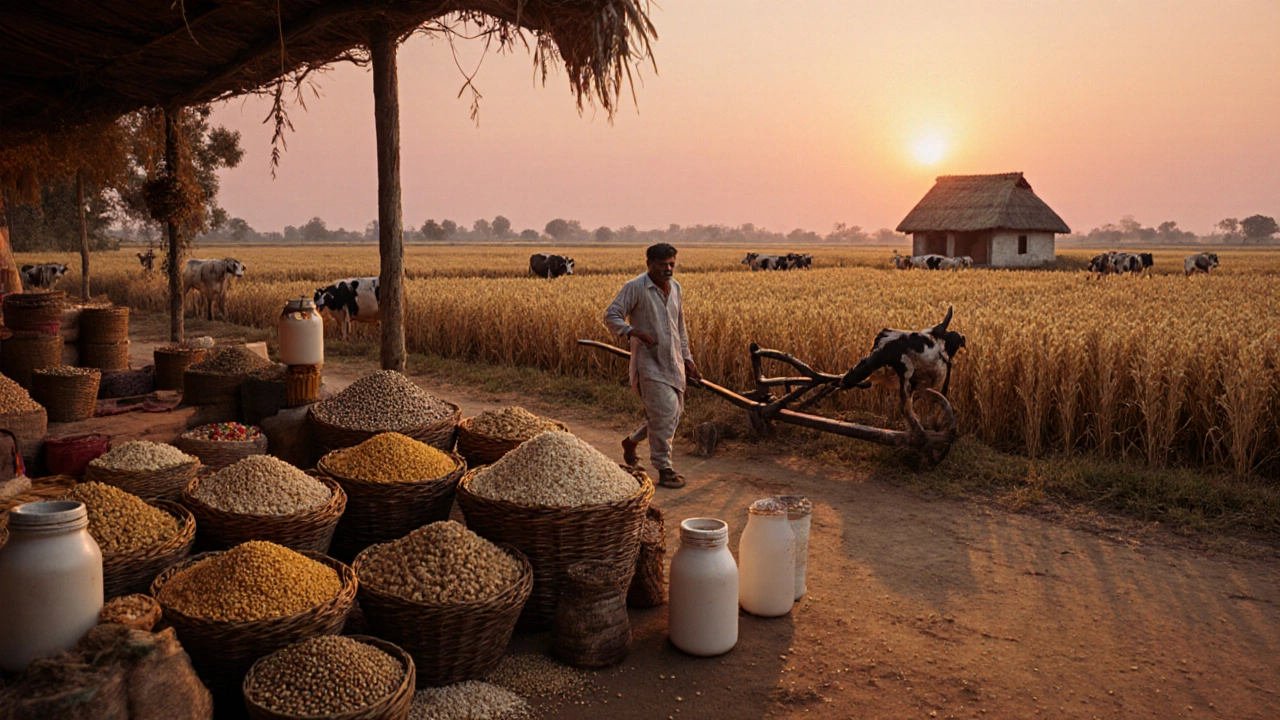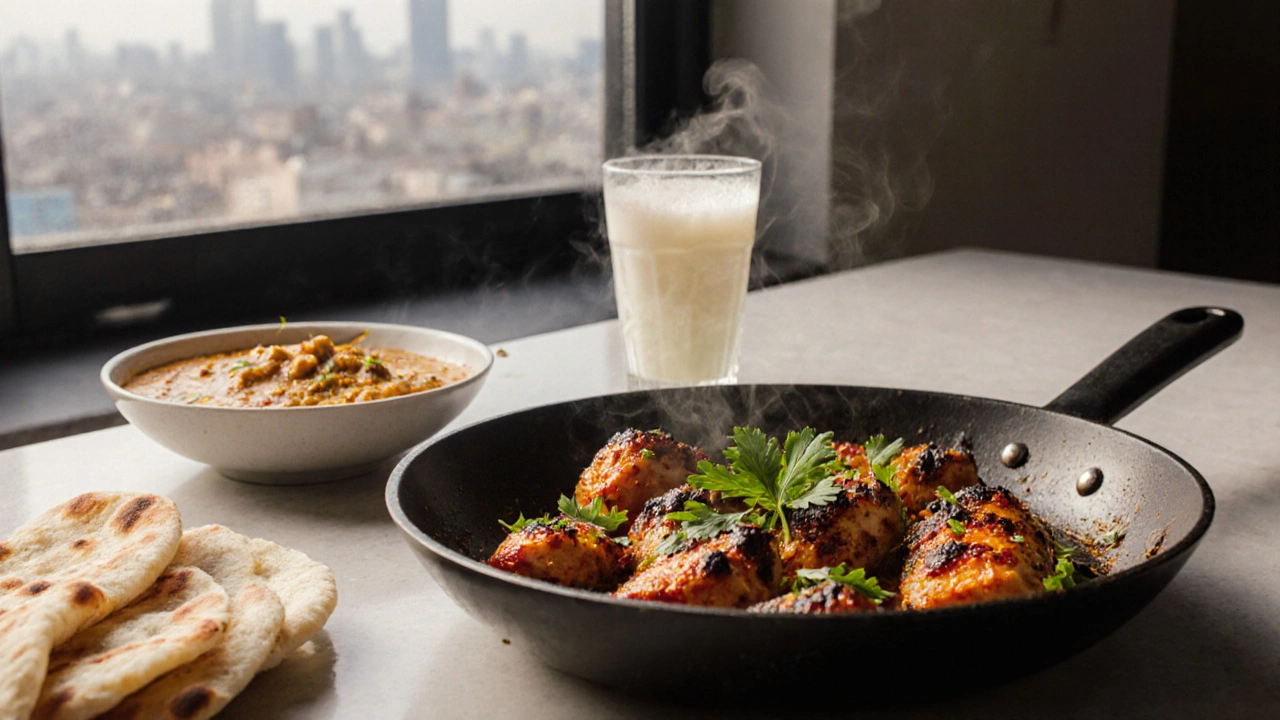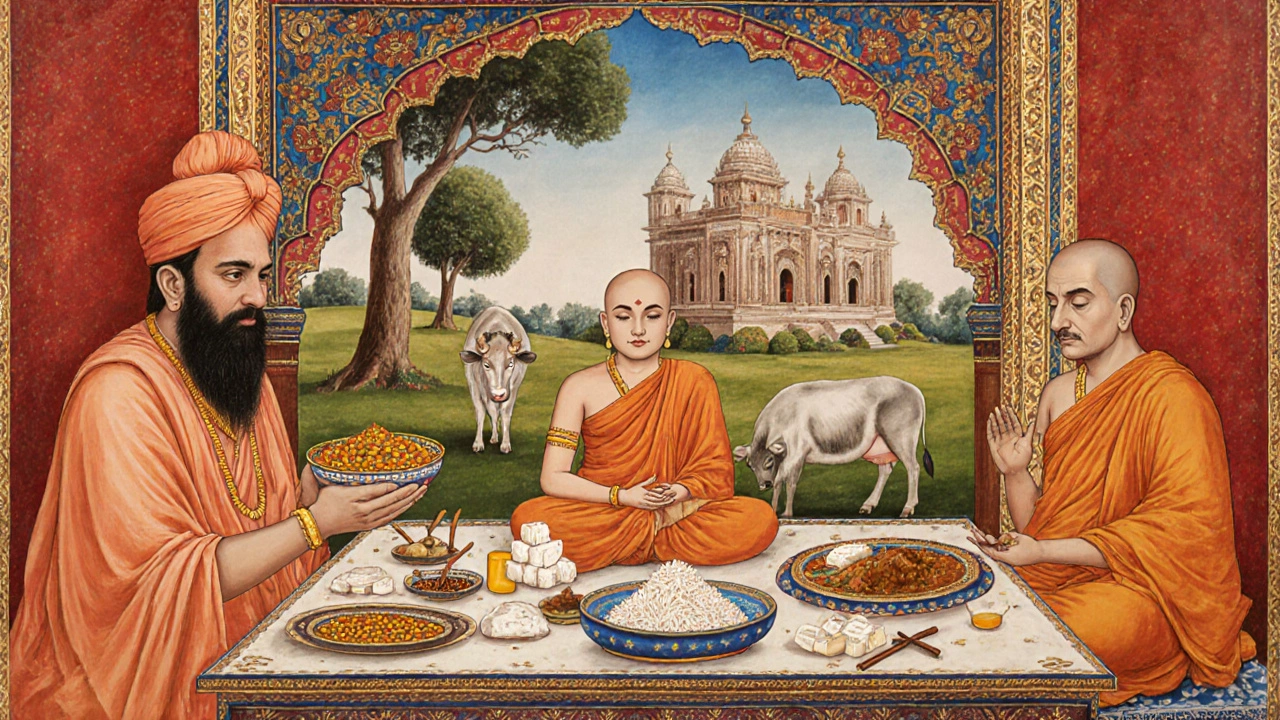8 Oct 2025
- 0 Comments
India Meat Consumption Explorer
About India's Low Meat Consumption
India has one of the lowest per-capita meat consumption rates globally, influenced by religious beliefs, cultural practices, and economic factors.
Global Comparison
Compare India's meat consumption with countries like the U.S., Brazil, and China.
Select a country and click "Show Meat Consumption Data" to view the comparison.
Key Insight
In India, chicken dominates meat consumption, while beef is nearly absent due to religious restrictions. Despite growing urbanization and income levels, per-capita meat intake remains significantly lower than global averages.
Key Takeaways
- Religious teachings-especially Hinduism, Jainism, and Buddhism-have shaped a long‑standing respect for non‑violence toward animals.
- Historically, farming in India focused on grains, pulses, and dairy rather than livestock, making plant‑based foods cheaper and more accessible.
- Social customs like caste rules and festival traditions reinforce vegetarian meals in many regions.
- Climate, health beliefs, and modern urbanization are driving a modest rise in meat intake, but chicken remains the primary meat of choice.
- Understanding these layers helps explain why India meat consumption per capita is among the lowest globally.
Indian diet is a culinary system that blends grains, legumes, dairy, spices, and, in many regions, little or no meat. Its evolution reflects millennia of religious teachings, agrarian practices, and social norms.
Historical Roots of Vegetarianism
The earliest references to meat‑free eating in the subcontinent appear in ancient texts like the Mahabharata and the Buddhist sutras, where abstaining from animal sacrifice was praised as a path to spiritual purity. Over time, these ideas crystallised into formal doctrines.
Vegetarianism is the practice of excluding meat, fish, and poultry from one's diet, often for ethical, religious, or health reasons became especially prominent among adherents of Jainism, which emerged around the 6th century BCE.
Jain monks followed an extreme form of ahimsa (non‑violence) that prohibited even the unintentional killing of insects. This strict stance rippled outward, influencing many lay communities to limit meat consumption.
Religious Influences
Hinduism the dominant faith in India, comprising about 80% of the population, teaches respect for all life and often encourages vegetarian meals, especially during festivals and fasting periods shapes daily food choices. While not all Hindus are vegetarians, many avoid beef due to the cow's sacred status.
Similarly, Jainism advocates a rigorous vegetarian diet that excludes root vegetables to avoid harming microorganisms has created entire communities that rely on dairy, beans, and grains.
Buddhism while more flexible, promotes mindful eating and often recommends a plant‑based diet for monks and lay practitioners alike also contributed to the cultural acceptance of meat‑free meals, especially in eastern states like Assam and Bengal.
Islam, Christianity, and Sikhism-though present in India-represent smaller percentage shares. Muslims and Sikhs traditionally consume meat, but even within these groups, pork is rarely eaten due to cultural taboos, and chicken dominates the meat market.

Cultural and Social Norms
The caste system historically dictated food habits. Upper castes, especially Brahmins, were expected to maintain a clean, vegetarian diet, while lower castes were often associated with meat‑based occupations like butchery. Though legal reforms have dismantled caste‐based discrimination, the food legacy persists.
Festivals such as Navratri, Ekadashi, and many regional harvest celebrations feature strict fasting or vegetarian feasts. These rituals reinforce a plant‑centric palate from a young age.
Another cultural pillar is dairy. Milk, ghee, and paneer are celebrated as sources of strength and purity. The popularity of dishes like dal‑makhani, saag paneer, and lassi illustrates how dairy fills the protein gap left by limited meat.
Economic and Agrarian Factors
India's agrarian economy has traditionally favoured crops that feed large populations with minimal resource input. Agriculture in India focuses on cereals (rice, wheat), pulses, and oilseeds, which are cheaper to produce than livestock provides an affordable calorie base for the majority.
Raising cattle for meat requires significant land, water, and feed-resources that were historically scarce. In contrast, dairy cattle could graze on marginal lands, supply milk, and still be used for ploughing, offering a dual benefit.
According to the 2023 Food and Agriculture Organization (FAO) report, per‑capita livestock meat production in India was just 4.2kg, compared with 99kg in the United States. The cost differential makes meat a luxury for many rural families.
Livestock sector contributes about 4% to India's GDP, far lower than the agricultural sector's 15%, underscoring its limited economic pull.
Health Beliefs and Climate Considerations
Traditional Ayurvedic medicine classifies foods by their effect on the body's doshas (Vata, Pitta, Kapha). Meat is often labeled “Rajasic” (stimulating) and “Tamasic” (heavy), traits discouraged for maintaining mental clarity and calm.
India's hot climate in many regions also influences dietary preferences. Plant‑based meals, especially those with yogurt and spices, are perceived as cooling, while heavy meat dishes can feel oppressive in summer heat.
Modern health studies have reinforced these beliefs: high‑fiber, low‑fat vegetarian diets are linked to lower rates of heart disease and diabetes-conditions that are rising concerns in India.

Modern Shifts: Urbanization and Changing Palates
Urban middle‑class growth, exposure to global cuisines, and rising disposable incomes are nudging meat consumption upward. Chicken, being cheaper and quicker to cook than lamb or beef, leads the meat market.
Data from the Indian Meat Export Federation (IMEF) shows chicken sales increasing by 12% year‑over‑year from 2022 to 2024, while mutton and beef remained flat. Yet, even with this growth, per‑capita meat intake stays below the global average.
Fast‑food chains like KFC and McDonald’s have expanded menu items that blend Indian spices with chicken, creating a hybrid that feels familiar yet novel. This reflects a cultural compromise: maintaining flavor traditions while embracing protein diversity.
Comparative Snapshot
| Country | Beef | Lamb/Mutton | Chicken | Total Meat |
|---|---|---|---|---|
| India | 0.2 | 0.3 | 3.7 | 4.2 |
| United States | 24.0 | 5.5 | 69.5 | 99.0 |
| Brazil | 9.0 | 2.5 | 37.0 | 48.5 |
| China | 4.5 | 5.0 | 17.5 | 27.0 |
The table highlights how chicken dominates India's meat profile, while beef consumption remains negligible due to religious bans.
Key Takeaways for Readers
- If you’re cooking for Indian friends, prioritize dairy, legumes, and spices; offer chicken as an optional side.
- Understanding the religious and cultural context helps avoid accidental offense-especially around beef.
- When traveling in India, street‑food stalls often serve vegetable‑heavy snacks like samosa, pakora, and chaat, reflecting the local palate.
- For health‑focused meals, Indian vegetarian dishes provide balanced protein through paneer, lentils, and chickpeas.
Frequently Asked Questions
Why is beef almost never eaten in India?
The cow is revered as a sacred animal in Hinduism, representing motherhood and Earth. This reverence translates into legal bans on cow slaughter in many states, making beef scarce and socially unacceptable.
Do all Indians follow a vegetarian diet?
No. While a large segment-especially in certain regions and among specific castes-practices vegetarianism, millions of Indians regularly eat chicken, mutton, and fish. Religion, region, and personal preference create a varied dietary landscape.
What protein sources replace meat in Indian cooking?
Lentils (dal), chickpeas (chana), kidney beans (rajma), soy products (tofu, soy granules), dairy (paneer, milk, ghee), and nuts provide ample protein for vegetarians.
Is meat consumption rising in India?
Yes, especially among urban middle‑class families. Chicken is the fastest‑growing meat segment, but the overall per‑capita intake remains well below the global average.
How can I adapt a non‑vegetarian recipe for Indian tastes?
Swap red meat with chicken or paneer, use Indian spice blends (garam masala, cumin, coriander), and finish with a splash of yogurt or ghee for authenticity.
